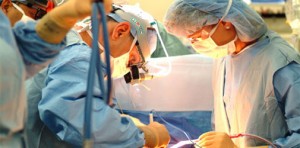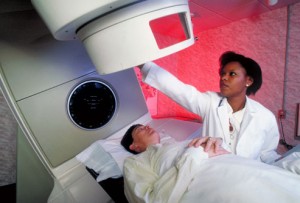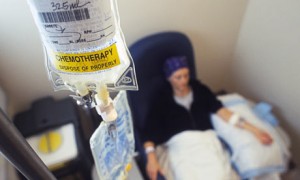Continued from Part 4
What are the principles of treatment for oral cancer?
Individuals with oral cancer often present too late for cure and some may not benefit from treatment. Three treatment options are possible:
- Attempted cure
- Active palliative care
- Supportive care only pending death
If cure is attempted, the highest chances of success are given by multimodality treatment – a combination of surgery, radiotherapy, and more rarely, chemotherapy. The most aggressive treatment that the individual is able to withstand will be recommended because if the first round of treatment fails, the chances of survival are much reduced.
What are the factors influencing treatment?
- Patient factors – general health, pre-existing medical problems, patient’s wishes
- Tumor factors – size of tumor, proximal structures, spread of cancer to other areas
- Clinician factors – experience of clinician
What are the treatment options available for oral cancer?
- Surgery or laser
- Radiotherapy
- Chemotherapy
- Combined modalities (surgery and radiotherapy, chemoradiation)
Surgery
The aim of surgery is to excise the cancer with the largest possible margin. At other body sites it is usual to attempt to excise a malignant tumor by about three centimeters. This is rarely possible in the head and neck and margins of only a few millimeters are usual if the lesion is large. Larger margins may be possible but only at a cost of reduced function and deformity. The head and neck contain many important structures and although many can be sacrificed and/or reconstructed, the resulting quality of life may be unacceptable. In some cases surgery is palliative, designed to remove the bulk of the lesion in order to reduce the symptoms arising from it.
Advantages – single episode of treatment, excision of lesion can be confirmed, subsequent radiotherapy still possible
Disadvantages – surgical risks, anesthetic risks, altered appearance, reduced function, adverse effects at the donor site of flaps
Laser or photodyanamic therapy
Laser is useful in treating pre-cancerous lesions and early squamous cell carcinomas. This involves injection of a photosensitizing agent and illumination with a specific waveband non-thermal laser after a set time interval which causes tumor and tissue destruction by several different means. Defect heal surprisingly well by secondary intention.
Advantages – haemostatic (can seal blood vessels smaller than 0.5 millimeters), less scarring, less pain due to minimal edema, esthetically superior
Radiotherapy
Radiotherapy selectively destroys the rapidly dividing cells (cancer cells) by exposure of radiation. Cells exposed to ionizing form free radicals intracellularly, causing denaturation of large molecules including DNA.
Advantages – no local destruction of tissue, function largely unaffected
Disadvantages – long duration of treatment, scarring and reduced blood supply of treated tissue makes subsequent surgery more difficult
Chemotherapy
Chemotherapy is the use of chemicals (drugs) to destroy cancer cells. Chemotherapy works by interfering with the cancer cell’s ability to grow. It has the ability to treat widespread (metastatic) cancer that is in more than one location in patient’s body. This ability makes chemotherapy very important in a patient’s fight to overcome cancer, because radiation therapy and surgery are only suitable for treating cancer in localized areas.
Mechanism of action
- Damage the DNA of the cancer cells so they can no longer reproduces
- Inhibit the synthesis of new DNA strands so that no cell replication is possible in ‘S’ phase of cell cycle
- Stop the mitotic processes of the cell so that the cancer cell cannot divide into two cells
Types of chemotherapy
- Adjuvant chemotherapy is given to patients who have undergone treatment of their primary cancer site with surgery and/or radiation. Goals of treatment include elimination of occult disease, especially distant metastases.
- Neo-adjuvant chemotherapy (also known as induction chemotherapy) is given to patients prior to definitive treatment of the primary cancer site.
- Palliative chemotherapy is given to patients with incurable disease to temporarily reduce tumor volume in the hope of improving quality of life and lengthening survival.
Choice of treatment modalities
Treatment modality |
Indications and contraindications |
| Excision and primary closure | This is usually reserved for small cancers where there is some adjacent tissue that can be mobilized to close the surgical defect. This usually limits primary closure to the lip, tongue or cheek.
The advantage of not having to operate on another site to obtain tissue for reconstruction is offset by the resulting distortion of the tissues, risking scarring and poor function. Skin grafting is now rarely used in the mouth. Sometimes the surgical site can be left to granulate. This is usually only the preferred treatment after removal of the entire upper jaw, when an obturator is placed in the cavity. |
| Excision and reconstruction | For larger cancers and those excised in continuity with a neck dissection, some form of reconstructions is needed. Reconstruction seals the mouth from the tissue planes of the neck and replaces the lost oral tissues to restore function, reduce scarring and improve cosmetic result.
Reconstruction utilizes flaps of tissue grafted into the mouth. The flap of tissue may be local, distant pedicled flaps of muscle from the trunk or microvascular grafts. All types of flaps may have compilations at the donor tissue site. |
| External beam radiotherapy (teletherapy) | External beam radiotherapy is the most frequently used type of radiotherapy for head and neck malignancy. High energy X-rays are produced by X-ray generators (energy 100kV) or linear accelerators (energy 20mV). These more penetrating high energy techniques have largely replaced the older systems based on gamma rays emitted from radionucleotides such as Cobalt-60, which carried a higher risk of inducing osteoradionecrosis. In some centers particulate radiation using electrons or neutrons may also be available.
All types of oral cancers may be treated by teletherapy as a primary treatment but cancers that have invaded into bone are usually not because the bone absorbs radiation, shielding the cancer, and is at risk of osteoradionecrosis. |
| Implant radiotherapy (brachytherapy) | Small, localized cancers can be treated with implanted radiation sources. These emit gamma rays from needles or pellets of radioactive iridium-192 or gold-198 that are placed into the lesion under general anesthetic and removed after 6 or 7 days. This type of treatment is useful for T1 or T2 cancers of the tongue or cheek. An advantage is that there is a lower dose to external tissues and a very high dose within the lesion. A disadvantage is that a maximal dose of radiation is always given and no dose can be held in reserve in case of recurrence. |
| Chemoradiotherapy | Combination chemotherapy and radiotherapy is used for larger cancers. Additional chemotherapy may provide a further advantage over radiotherapy/surgery alone but the patient must be fit and able to withstand the combine adverse effects of both treatments. Various combinations of drugs are used, cisplatinum and 5-fluorouracil being one regimen in use. |
| Palliative care | Although many patients are anxious to attempt curative treatment whatever the cost, palliative treatment may be the appropriate choice for a good quality of remaining life. |
What are the complications of oral cancer treatment?
General
- Nausea and vomiting (early onset)
- Dental demineralization
- Altered taste
- Mucositis or stomatitis (inflammation of the oral soft tissues)
- Dry mouth or salivary gland dysfunction
- Hypersensitive teeth
- Bacterial, viral or fungal infection (secondary infections)
- Redness and swelling of skin and facial tissues
- Nutritional compromise
- Difficulty in swallowing
- Difficulty chewing and reduction of chewing power
- Altered speech
- Altered social functions
- Disfigurement of the face, head, and neck after surgery
- Weight loss
Treatment specific
Radiation therapy
- Short term effects: skin pigmentation, mild skin radiation burns
- Long term effects: fibrosis of tissues, osteoradionecrosis, post-radiation dental cavities, poor skin healing, low risk of a radiation-induced malignancy 10 years later
Chemotherapy
- Bone marrow suppression
- Bleeding
What is the chance of cure for oral cancer?
In general the 5 year survival rate for oral cancer is poor. This is because of late presentation, leading to large cancers on findings, often with extensive lymph node and distant spread to other parts of the body. In addition, many patients are medically compromised by lifetime of heavy smoking and excessive alcohol intake or are elderly and infirm and cannot accept aggressive treatment.
However, this does not mean that extensive combination therapy and reconstruction is pointless in those with advanced cancers. Attempted surgical cure which alleviates local disease and symptoms and allows the patient a few more years of life and gradual demise is still worthwhile.



